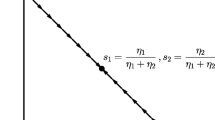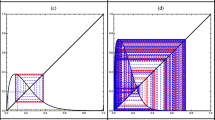Summary.
Consider an oligopolistic industry composed of two groups (or populations) of firms, the low cost firms and the high cost firms. The firms produce a homogeneous good. I study the finite population evolutionarily stable strategy defined by Schaffer (1988), and the long run equilibrium in the stochastic evolutionary dynamics based on imitation and experimentation of strategies by firms in each group. I will show the following results. 1) The finite population evolutionarily stable strategy (ESS) output is equal to the competitive (or Walrasian) output in each group of the firms. 2) Under the assumption that the marginal cost is increasing, the ESS state is the long run equilibrium in the stochastic evolutionary dynamics in the limit as the output grid step, which will be defined in the paper, approaches to zero.
Similar content being viewed by others
Author information
Authors and Affiliations
Additional information
Received: September 19, 1997; revised: June 18, 1998
Rights and permissions
About this article
Cite this article
Tanaka, Y. Long run equilibria in an asymmetric oligopoly. Econ Theory 14, 705–715 (1999). https://doi.org/10.1007/s001990050350
Issue Date:
DOI: https://doi.org/10.1007/s001990050350




